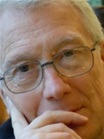
Plenary Lecture
Visual Discomfort from Building Design and its Consequences for Cerebral Metabolism

Professor A. J. Wilkins
Co-authors Olivier Penacchio, An Le
Department of Psychology
University of Essex
UK
E-mail: arnold@essex.ac.uk
Abstract: Scenes from nature share in common certain spatial properties. Images with these properties can be processed efficiently by the human brain. Patterns with unnatural spatial properties are uncomfortable to look at, and are processed inefficiently, according to computational models of the visual cortex. Consistent with such putative computational inefficiency, uncomfortable images have been demonstrated to elicit a large haemodynamic response in the visual cortex, particularly so in individuals who are predisposed to discomfort. We show that these considerations may be important in the design of the modern urban environment. First, we measured the haemodynamic response to images of buildings computed to have unnatural or natural spatial properties, and showed that in posterior brain regions the images with unnatural properties (many of which were judged uncomfortable) elicited a larger haemodynamic response. We then showed that judgments of discomfort from real scenes (both shrubbery and buildings) are similar to those from images of the scenes. We conclude that the unnatural scenes in the modern urban environment are sometimes uncomfortable and place excessive demands on the neural computation involved in vision, with consequences for brain metabolism, and possibly also for health.
Brief Biography of the Speaker: Professor Wilkins’ studies of photosensitive epilepsy and techniques for treatment led to his more general interest in medical aspects of vision. He was responsible for the demonstration that fluorescent lighting is detrimental to health, and the invention of the first scientifically designed system for ophthalmic tinting, and its introduction into optometric practice in the UK. His research interests include the neuropsychology of vision, reading and colour, photosensitive epilepsy, migraine, typography, human memory and attention. These interests have helped him formulate a unified theory of Visual Stress, detailed in his book with this title (Oxford University Press, 1995). The theory has found support in independent functional imaging studies. (He has authored 3 books and more than 200 scientific articles.)